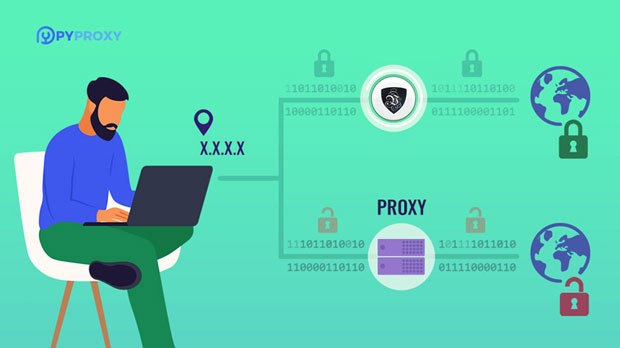When it comes to improving online security, privacy, and access to global content, socks5 proxies stand out as one of the most valuable tools. These proxies provide enhanced functionality by allowing users to bypass restrictions, improve anonymity, and access geo-restricted content across the web. Among the different types of proxies available today, SOCKS5 offers flexibility, speed, and reliability, making it a prime choice for individuals and businesses seeking superior online protection and performance. This article explores the investment potential of high-quality SOCKS5 proxies, particularly with a focus on service providers offering tailored solutions that meet the demands of users in various industries. The Basics of SOCKS5 ProxiesTo understand why investing in high-quality SOCKS5 proxies is a smart decision, it’s essential to first grasp the fundamentals of how they work. SOCKS5, the latest version of the SOCKS protocol, offers several advantages over its predecessors and other types of proxies.Unlike HTTP or HTTPS proxies, which are designed specifically for web traffic, SOCKS5 proxies operate at a lower level of the network stack, providing broader support for various internet protocols. SOCKS5 proxies can handle traffic for not only web browsing but also other services like email, FTP, and peer-to-peer (P2P) applications. This makes them a versatile choice for users with diverse needs, whether for personal browsing, streaming, or business use cases.What makes SOCKS5 particularly appealing is its ability to support authentication and provide a high level of anonymity. SOCKS5 proxies do not alter data packets, meaning there’s less risk of data loss or delays, which results in faster and more efficient browsing. Additionally, the protocol supports encryption, further enhancing privacy and security for users. Why SOCKS5 Proxies Are Worth the InvestmentFor investors and users alike, the decision to use SOCKS5 proxies can be highly rewarding, especially in a digital landscape where privacy and security are increasingly at the forefront of concern. Here are a few reasons why investing in high-quality SOCKS5 proxies is a smart move:1. Enhanced Security and AnonymityOne of the primary reasons businesses and individuals invest in SOCKS5 proxies is the level of security they provide. These proxies work by masking a user’s real IP address, making it significantly harder for anyone to trace online activities back to them. The use of SOCKS5 proxies also ensures that sensitive data is kept private, as the protocol supports encryption for added security. This makes SOCKS5 a preferred choice for users looking to safeguard their personal or corporate data from hackers, surveillance, and other security threats.Additionally, SOCKS5 proxies offer the advantage of anonymity by preventing the user’s identity from being revealed while they access websites or services. This is crucial for users who want to keep their online actions private, whether they are involved in secure communications, research, or simply browsing without being tracked.2. Unrestricted Access to Global ContentHigh-quality SOCKS5 proxies can help bypass geo-restrictions, providing users with unrestricted access to content from around the world. This is especially beneficial for those looking to access region-specific content such as streaming services, online marketplaces, or certain websites that may be blocked in their region.For businesses, SOCKS5 proxies can be instrumental in conducting market research or competitor analysis in different geographical areas. By appearing as though they are browsing from a different location, users can obtain a local perspective on the content and services offered in specific countries or regions.3. High-Speed PerformanceSpeed is a critical factor when considering any type of proxy, especially for businesses and individuals who rely on consistent and fast internet connectivity. SOCKS5 proxies are renowned for their high-speed performance, especially when compared to older protocols like SOCKS4 or HTTP proxies. Since SOCKS5 does not manipulate the data being sent, there is less overhead, resulting in faster speeds for activities such as streaming, downloading, or browsing.For users who need high-speed access to data or real-time communication, the performance advantages of SOCKS5 are especially crucial. For businesses that require constant uptime or quick response times, investing in high-quality SOCKS5 proxies can significantly improve operational efficiency.4. Flexibility for Various ApplicationsAnother reason to invest in SOCKS5 proxies is their versatility. Unlike HTTP proxies, which are limited to web traffic, SOCKS5 proxies can handle any type of internet protocol. This includes FTP (File Transfer Protocol), P2P file sharing, and other protocols used by a variety of services, including email, gaming, and VoIP (Voice over IP).This flexibility makes SOCKS5 proxies ideal for businesses that rely on multiple types of internet-based communication. For example, online marketers, content creators, or developers may need to use various platforms that require different types of data to be transmitted across the network. By using SOCKS5 proxies, they can ensure that their online activities are well-protected and efficient.5. Increased Scalability for Business UseFor businesses that require multiple connections to remote servers or that need to manage large-scale operations, scalability is a key consideration. High-quality socks5 proxy services offer the ability to manage multiple connections simultaneously, making it easier to scale business operations. This is particularly beneficial for tasks such as web scraping, where businesses need to collect data from various websites without being blocked or throttled.Investing in scalable SOCKS5 proxy solutions also provides companies with the ability to optimize their network infrastructure. For example, businesses can set up proxy networks to distribute workloads across multiple nodes, thereby improving the efficiency of data processing and reducing the risk of network congestion or service interruptions.Challenges of SOCKS5 Proxies and How to Overcome ThemWhile SOCKS5 proxies offer numerous advantages, they are not without their challenges. Some of the potential drawbacks include:1. Initial Setup and ConfigurationFor users who are new to proxies, setting up SOCKS5 proxies can be somewhat complex. However, many high-quality providers offer user-friendly interfaces and setup guides that simplify the process. Investing in a reliable SOCKS5 proxy service can minimize the technical burden and allow users to enjoy the benefits without a steep learning curve.2. Potential for Slowdowns Due to OveruseAnother common issue with proxies is potential slowdowns when too many users are on the same server. To avoid this, it’s essential to choose a high-quality SOCKS5 provider that offers dedicated servers or offers efficient load balancing to ensure optimal performance, even during peak usage times.Conclusion: The Value of Investing in High-Quality SOCKS5 ProxiesIn an increasingly connected world, the need for secure, private, and unrestricted internet access continues to grow. High-quality SOCKS5 proxies provide an invaluable solution to these challenges, offering enhanced security, anonymity, and speed for both personal and business use. With the ability to bypass geo-restrictions, maintain high-speed performance, and support various applications, SOCKS5 proxies offer significant investment potential.By understanding the advantages and challenges associated with SOCKS5 proxies, users can make informed decisions that align with their specific needs. Whether for personal privacy, business scalability, or global content access, SOCKS5 proxies represent a worthwhile investment for anyone looking to enhance their online experience.
Jan 10, 2025
![arrow]()



















































